A New Zealand report exposes 50 years of psychiatry and government agencies covering up children being tortured at Lake Alice psychiatric facility with electroshock, their genitals and breasts brutally shocked without anesthetic. CCHR and survivors are vindicated and praised for advocating for the truth. The report could prevent psychiatric torture in the U.S.
By Jan Eastgate
President CCHR International
December 30, 2022
The December 15, 2022 recognition that children were tortured in a New Zealand psychiatric facility was a huge vindication for survivors. The New Zealand government released the findings of its investigation into how children in the 1970s were tortured with electroshock, including to their genitals, and given injections of paraldehyde, a central nervous system depressant, as punishment. In a groundbreaking decision, New Zealand Solicitor-General Una Jagose said the “treatment” given to children met the legal definition of torture. The Citizens Commission on Human Rights International praises its New Zealand branch for tenaciously fighting 45 years to obtain this recognition which could have a global impact, including in the U.S., where children are still being electroshocked, including those in a Massachusetts facility that uses it as punishment for behavioral control.[1]
In 2020, the New Zealand government held a Royal Commission Inquiry into the treatment of children between 1972 and 1980 at the now-closed Lake Alice psychiatric hospital, because of the “litany of failings by state agencies,” to protect the children from psychiatric abuse and for ignoring the seriousness of this.[2] The child and adolescent unit at the hospital was run by psychiatrist Selwyn Leeks and everyone from fellow psychiatrists, psychiatric and medical associations, and government departments allowed it to occur.[3]
The government report, called “Beautiful Children: Lake Alice Inquiry into the Lake Alice Child and Adolescent Unit” describes the facility as a “shameful chapter in the history of Aotearoa [Māori] New Zealand.” Further, “The abuse was completely unjustified, both by today’s standards and the standards of the time,” NZ Minister of Internal Affairs Jan Tinetti added.[4]
When I first joined CCHR in Australia in 1977, I was briefed about the atrocities CCHR NZ had uncovered. It was never something that could be dropped and CCHR persisted to expose the horrors and demand justice for the victims. Psychiatrists knew what their colleague Dr. Leeks was doing and “lessened” the crime by justifying it as “treatment.”
We are talking about children aged 5 and 6 who received ECT, with and without anesthetic; other children in the ward hearing the screams of their fellow “patients” being electroshocked; kids would wet their beds in fear of receiving ECT; “young people would lose control of their bladders and bowels because they were so afraid to get shocks,” and clung to each other crying awaiting their turn. Leeks applied electric shocks to patients’ genitals and breasts, sometimes making other patients watch him do so, and as “perceived treatment” for homosexuality, Leeks justified giving boys electric shocks to their genitals and would say, “[Let’s] cure your sexuality the hard way.”
CCHR always knew and exposed it as torture. So did the survivors. The Royal Commission inquiry report now validates that. The Commission staff and the report acknowledged CCHR’s long-term work, stating that “This investigation and report would not have been possible without the persistence of the advocates and investigators who worked tirelessly over decades to seek justice for survivors.” Further: “All survivors, all authorities, all voices, to all from the four winds, we acknowledge you.”[5]
Leonie McInroe calls herself a child of Lake Alice. She was taken there when she was 12. She stated: “The children of Lake Alice, we walk amongst you with this pain and the stains and the scars of our time in Lake Alice, and to have it fully displayed or fully expressed in all of its horrific truth is real validation…. It also displays and shows the catastrophic failure of protection. There are so many officials that have worked tirelessly for many years to avoid this truth being shown.”[6]
Psychiatric Torture Gets Defined
The recognition of torture is important to ongoing abuse of children in psychiatric facilities today but it is not limited to New Zealand. Jagose’s testimony to the commission was that torture had three elements—
(1) the infliction of severe pain and suffering,
(2) by a person acting on behalf of the State,
(3) for the purpose of punishment. She said she had no doubt or question that the first two elements had been met at the Government-run institution.[7]
The commission took the view that electroshock had been used as punishment, overseen by Leeks: “We have already concluded the evidence is compelling that electric shocks were sometimes administered at Lake Alice as punishment…. It follows that in the view of the inquiry those acts meet the definition of torture as outlined by the Solicitor-General.”[8]
Similar Child Torture in Massachusetts
The same definition could easily apply to the use of skin electroshocks used as behavior modification at the Judge Rotenberg Center (JRC) special-needs facility in Massachusetts. In 2021, the U.S. Food and Drug Administration lost an appeal against its decision to ban a device that uses electroshock on the skin of intellectually challenged or disabled-mentally “ill” individuals, including autistic children for behavior modification. Jennifer Msumba, an autistic woman who received shocks “almost every day” at JRC told CBS News, “I would get five or ten shocks for just doing one thing,” meaning a minor behavioral infraction. “That was like being underground in hell. I would ask God to make my heart stop.”
In 2010 and 2013, UN Special Rapporteurs on Torture sent urgent appeals to the U.S. government, urging an investigation into the JRC shock device and students subjected to electric shock that were violations under the UN Convention against Torture and other international standards.[9] The torture continues.
The NZ Inquiry report and definitions of torture show how draconian and punitive the U.S. courts are, to allow the ongoing use of electroshock for psychological behavior modification.
The torture described in the NZ report included electric shock treatments often without anesthetic, and electrodes being applied not only to the temples of patients but also to other body parts including the torso and genitals.[10] Leeks’ regime of torture and abuse was fueled by his inane belief that the patients were too disruptive and destructive for state-run institutions to deal with.[11]
The victims have waited more than 50 years to be believed and for the truth to be told about what happened to them. New Zealand journalist Aaron Smale, who has tracked the Lake Alice story for years, said it is significant that the inquiry named what happened at Lake Alice as torture. “The use of the word ‘torture’ by a Royal Commission carries a weight that will now have major implications for how the Government responds, including the police. Previous governments have been reluctant to call it anything that might create a legal or financial liability and have gone out of their way to avoid using such terms. The word torture is now permanently and officially part of the Lake Alice vocabulary,” Smale wrote.[12]
Dr. Selwyn Leeks’ Egregious Conduct Exposed
The report further states:
- “In the almost eight years the unit operated, Dr. Leeks and the staff at Lake Alice inflicted, or oversaw, serious abuse—some amounting to torture—in what quickly became a culture of mistreatment, physical violence, sexual and emotional abuse, neglect, threats, degradation and other forms of humiliation.”
- “The torture survivors experienced included electric shocks, often without anesthetic, applied not just to the temples but to the limbs, torso and genitals. They were given excruciatingly painful and immobilizing injections of paraldehyde, administered by staff as punishment or as an improper form of aversion therapy, not for legitimate medical reasons. Children and young people were held in solitary confinement and deprived of their liberty, sometimes for days and weeks on end.”
- “Dr. Leeks wielded almost unbridled power over the nurses and staff at Lake Alice…. There was a culture of impunity that enabled and normalized acts of abuse and torture. Sexual, physical, cultural and emotional abuse was widespread and unchecked in the unit.”[13]
The report also outlined the misuse of solitary confinement and emotional and psychological abuse in the unit. Torture and sexual and physical abuse of over 100 survivors of the adolescent unit of Lake Alice Psychiatric Hospital was spelled out in the report. Between 400 and 450 young people went through the facility.[14] Most of them came from social welfare care, and a third of those admitted were Māori.[15]
As further testimony to not only the failed and damaging psychiatric “treatment” administered, the report further confirmed the harm survivors experienced to their physical and mental health, their cultural and spiritual well-being, and their educational and economic prospects:
“Many survivors turned to crime and were imprisoned.” Further, “Many survivors reported becoming dependent on drugs and alcohol, sometimes from a young age, to numb the emotional pain and block out traumatic memories. As a result many have been convicted for drink-driving and cannabis use….”[16]
Rather than correct so-called disruptive behaviors, the psychiatric treatment actually caused them.
CCHR’s Tireless Work Against Abuse at Lake Alice Vindicated
Among those non-government entities who did hold Dr. Leeks and others at Lake Alice accountable was CCHR. It never gave up exposing this, even assisting survivors in taking the matter to the United Nations Committee Against Torture in 2010 and 2012.[17]
In 2012: “United Nations special rapporteur, Ms. Felice Gaer, wrote to the government saying the committee was concerned there had been no ‘prompt, impartial and effective investigation into all claims of abuse’ at Lake Alice and no prosecution of “alleged perpetrators of the torture and ill-treatment perpetrated there,” the Royal Commission report states.[18]
Ms. Gaer also asked the government to look at the adequacy of the NZ Police investigation, including complaints that NZ Police had failed to interview many survivors, and whether it planned to reopen the investigation.”
The New Zealand government responded at the time saying: “NZ Police acted independently and anyone alleging misconduct about a NZ Police investigation could go to the Independent Police Conduct Authority. It is said it did “not propose undertaking any further review.”
As Smale wrote: “These statements completely fall apart under the Royal Commission’s scrutiny. The police had not investigated sexual abuse and rape allegations, let alone the allegations of torture. In fact, they’d only spoken to one of the nearly 40 victims who’d lodged complaints with the police. How can it be that such sloppy and inaccurate statements can be put in front of the UN by the New Zealand government on an issue regarding the torture of children by employees of the state? The people involved in that debacle are high up in government agencies today.”[19]
Victor Boyd of CCHR NZ helped former Lake Alice patient Paul Zentveld file a complaint to the UN in relation to its Convention against Torture. Boyd was introduced to Zentveld in 2005 and is listed as his “counsel” in the complaint to the UN. Boyd first began investigating allegations in 1977 and did inspections of the Lake Alice unit at the time.[20]
The Commission staff and the executive summary acknowledged this fortitude: “In particular, we acknowledge members of the Auckland Committee on Racism and Discrimination [ACORD] and the Citizens Commission on Human Rights.”[21]
In the course of its investigation, the Commission said of the children’s plight: “Time and time again we heard and read of tamariki—running away. They never got far. No one ever asked why they were running, or what they were running from.
“This inquiry did ask. We heard that they were sent to the unit for treatment but instead many were subjected to torture…including serious sexual, physical, emotional and psychological abuse. Survivors’ cultures were ignored.”
So, too, did CCHR ask—repeatedly for nearly five decades.
The report continues: “The Citizens Commission on Human Rights (CCHR) and the Auckland Committee on Racism and Discrimination (ACORD) both played a significant role in bringing the public’s attention to allegations of abuse at the unit. Their work played a key part in the series of events that led to Dr. Leeks’ departure and the unit’s eventual closure.”
CCHR is a “non-profit mental health watchdog. It was co-founded by the Church of Scientology and an emeritus professor of psychiatry named Dr. Thomas Szasz.… CCHR has remained involved in advocating for survivors of the unit and bringing attention to what went on there.”
ACORD started working with survivors in the mid-seventies.
Founding member Oliver Sutherland maintained that interest to this very day, describing the report as stunning and a tour de force, “which I think will go down in history as probably the most damning expose of the abuses of the State against children, and the medical professional.”
He believes the abuse at Lake Alice was allowed to happen because the medical profession supported its own. “People tend to trust doctors and so Dr. Leeks and the medical staff at Lake Alice could get away with torture in the guise of medical treatment and psychiatric treatment for eight long years for those children. He was under no scrutiny and those who did look, looked away or gave him implicit support.”[22]
The failure of NZ Police to prosecute a single person over what happened at Lake Alice is what prompted Zentveld to file a complaint to the UN, supported by CCHR NZ. Zentveld was sent to Lake Alice five times from the age of 13. He was heavily drugged, given ECT and put in seclusion.
On 10 July 2017, accompanied by Steve Green, who headed CCHR at the time, Zentveld appeared before the UN committee in Geneva.[23]
In December 2019, the UN upheld his complaint and found NZ breached the Convention against Torture relative to the Lake Alice abuse allegations.[24] It ruled that NZ had breached its obligations under articles 12, 13 and 14 of the Convention by failing to adequately investigate Zentveld’s complaint and for failing to provide fair and adequate redress for the abuse he suffered.[25]
This led to the New Zealand Royal Commission into Abuse in Care Inquiry in 2021.[26]
Zentveld was pleased the Royal Commission acknowledged that there was torture at Lake Alice; “I know it is very damning, but it is the truth and torture is torture to children no matter what or who they are. If this is the only way to stop it, well so be it….”
Tyrone Marks was sent to the adolescent unit at the age of about 10 in 1972. In response to the report, he said, “Now there is no disputing the actual facts or who did what. The thing is Leeks was able to do whatever he wanted basically and he was backed by all the agencies, including the Department of Education, Social Welfare and other psychologists.”[27]
Criminal Culpability
Leeks was backed also by his own profession, which excused his abuses and, arguably, crimes. In 1977, CCHR and others first reported Leek’s torture to the police and to the NZ psychiatric association.
The Royal Commission report found that three police investigations into the unit—one in 1977 and two during the 2000s—were flawed, as were responses by government agencies and medical professional bodies.
Following a fourth police investigation, charges were laid against a former Lake Alice staff member. His trial is expected to take place in 2023.[28] However, Leeks escaped prosecution because of his ill health and dementia, although there was sufficient evidence to have charged him. He died in January 2022.[29]
A Royal Commission does not have the power to make findings of criminal or civil liability—only the courts can do that. “But from the earliest days there was evidence to justify criminal charges against Lake Alice staff, and our investigation has highlighted failings in the police investigations in the 1970s and 2000s. It is wrong that no one has ever been held accountable and that survivors are still waiting for justice.”[30]
Smale commented on this: “This begs the question: if this evidence has always existed, then why was it not acted on? The most clear answer to this is in a ministerial briefing by Dr. Ron Paterson, a Ministry of Health official, on October 15, 1997.”
Paterson said that: “The purpose of the paper [briefing] is to provide advice on how to minimize the legal and fiscal risks posed to the Crown arising out of the alleged mistreatment of patients in the adolescent unit at Lake Alice Hospital by employees of the Department of Health (the Department) and Palmerston North Hospital Board (the Board).”[31]
Simply put, the priorities were to protect government agencies from financial culpability and safeguard psychiatry’s reputation.
Leeks was protected by his psychiatric colleagues. In 1977, psychiatrist David Gilmore McLachlan, a Fellow of the Royal Australian & New Zealand College of Psychiatrists (RANZCP), was asked by police to review the files of Lake Alice-treated children—following CCHR’s exposure of conditions at the facility. In response, McLachlan sent a confidential memo to deputy police commissioner Bob Walton, which amounted to a “staunch defense of Leeks and his methods and that allegations against Leeks and his staff were unsubstantiated,” as journalist David Williams described it. Because Leeks thought the “newly advocated technique” was appropriate and justified, McLachlan concluded, “his motive in using it with intended therapeutic benefit cannot justifiably be censured.” [Emphasis added] Even more egregious, McLachlan blamed the children and adolescents, labeling them “therapeutically recalcitrant, and morale-destroying,” and asserting they “would readily ‘gang up’ against authority.”[32]
In its executive summary, the Commission names a number of state and quasi-state institutions that failed in their job. It would be easier to list institutions that weren’t involved, Smale wrote. The report says: “The institutions and entities called upon to act included the Ombudsman, a commission of inquiry, NZ Police, the Medical Association, the Medical Council, the New Zealand branch of the Royal Australian and New Zealand College of Psychiatrists, the Department of Health, the Department of Education, the Department of Social Welfare, Cabinet [in government], Crown Law, the Health and Disability Commissioner and ACC. Despite all these attempts, the perpetrators were not held to account.”[33]
Psychiatry Causes Torture at Lake Alice & Covers it Up
The most difficult thing to come to terms with—as there is no justification for this cruelty that was passed off as therapy—is the use of electroshock on children without anesthetic to “modify” behavior: The report details the evidence of the victims, first pointing out that “Dr. Leeks primarily used electric shocks as negative stimuli to discourage unwanted behavior. He maintained patients experienced these shocks only as ‘discomfort.’ He said this form of therapy was intended to make patients ‘think twice’ about repeating the undesirable behavior.’… He said the patients ‘all knew’ that if they carried out a particular unwanted behavior, staff would ‘immediately take them and give them the treatment.’ He claimed it could be done by virtually anyone, including psychologists or even family members.”
But survivors told the Commission of the severe pain they experienced:
- “In contrast to Dr. Leeks’ descriptions of a therapeutic community, the survivors who spoke to the inquiry overwhelmingly described their experience of Lake Alice as one of violence and terror. A key component of that experience was the use of electric shocks to punish or deter behavior in the name of aversion therapy, sometimes wrongly described as ‘unmodified ECT,’ in circumstances that departed from any recognized form of treatment.”[34]
- “Some survivors felt Dr. Leeks got enjoyment from delivering shocks. One survivor said, ‘I remember Leeks’ face when he would turn the knob; he smiled every time, and his smile would get broader and broader the more pain he caused.’ Mr. [Tyrone] Marks said, ‘To me, it was clear the staff enjoyed giving it to us. When I would beg or cry for them to stop, they would just laugh.’”
- “Some survivors also remembered Fridays as ‘Black Friday’ because Dr. Leeks typically gave electric shocks on that day. Survivors vividly described the anxiety of waiting for Dr. Leeks to arrive, not knowing who would be chosen to receive shock treatment.… Bryon Nicol told us that children and young people who were to receive shocks would be locked in the dayroom so they couldn’t escape while they waited for their name to be called.”
- “Mr. [Kevin] Banks told us, ‘I would wet my bed with fear on Thursday nights because I was so petrified of ECT.’ He went on to say, ‘the whole room, even the big tough boys, were in terror and many would be crying in fear. Sometimes Dr. Leeks would come into the day room himself and say ‘who’s for the zap’ or ‘who’s for the ride on the thunderbolt’ or ‘who’s for the national grid?’”
- Mr. Banks also said: “There were children aged 5 and 6 who received ECT, with and without anesthetic. I recall seeing ECT administered when I was on cleaning duty to a boy who was 9. I saw the marks on his temples after he had it and heard his screams.”
- “Some survivors told us that children and young people would lose control of their bladders and bowels because they were so afraid to get shocks. For example, Mr. [Rangi] Wickliffe said, ‘I knew lots of other kids who got ECT. They were always terrified of it; you could just see it in them. Some would urinate or defecate themselves in fear or others would be in the fetal position. Some kids would try to escape out of the windows.’ Mr. Wickliffe told us he and another survivor would often be on the list to receive shocks, ‘we would both lie in the fetal position in the dayroom, urinating and defecating with fear, clinging to each other, crying, waiting to see if we would be called for ECT. We only had each other.’”
- Mr. Malcolm Richards explained: “We could see the children being physically dragged up for it; we could hear the terrible screaming. After their ECT the children were put on their bed in the upstairs dormitory near the ECT room. We could see them being brought down half-dead looking hours later, for dinner.”
- “Some survivors described the sessions of shock treatment being worse if they had upset staff members. For example, Mr. Charles Symes said that once he was grabbed from behind by someone to be taken for ECT, started fighting without realizing it was Dr. Leeks and broke his nose. He said, ‘I got a hammering from ECT after that. I got ECT for six days in a row and each time it was harder and harder. I was then put in security for three weeks.’”
- “Once in the room, survivors were restrained while Dr. Leeks gave the electric shocks. Mr. Symes said, ‘Whenever they tried to strap me down like this on the table, I would always lash out and try to fight it. I would hear the ECT machine warming up, it would make this humming sound that I can still remember today. Once the humming stopped, it meant the machine was ready and the pain started.’”[35]
- There is evidence that 15 individuals at the unit and at least one person in the adult wing were given electric shocks to the genitals, groin or breasts.”[36]
- This justification was used in five of the 12 cases in which we found boys were given shocks to their testicles. One of the five told us Dr. Leeks put electrodes on his temples, arms and hands for resisting ECT, on his legs for kicking a door, and on his genitals for masturbating and participating in homosexual activity. Dr. Leeks would say, ‘[Let’s] cure your sexuality the hard way.’ Other reasons for getting shocked on the genitals included refusing medications and bed-wetting.”
- “Mr. Wickliffe said he witnessed a survivor being given shocks on his penis. He heard the survivor screaming and sneaked upstairs to investigate. He poked his head around the door and was shocked to see that staff had “wrapped his penis in gauze and then attached electrodes to it [and] then proceeded to zap him”. On another occasion, Dr. Leeks made a group of boys give this survivor electric shocks for abusing them. One of those in the group was Mr. Banks.”
- “Mr. Symes was the first survivor to complain of receiving electric shocks on the genitals from Dr. Leeks. In a sworn statement to the Citizens Commission on Human Rights in 1978, he said Dr. Leeks gave him ECT ‘below the belt’ and on his ‘private parts.’”
All this was covered up or justified.
The report criticizes both medical and psychiatric associations:
- The Medical Association prioritized fairness to Dr. Leeks over the safety and well-being of patients.
- The Medical Association and the Medical Council accepted much of Dr. Leeks’ response to allegations without question.
- The New Zealand branch of the Australian and New Zealand College of Psychiatrists learned of Dr. Leeks’ conduct in the late 1970s but did not confront Dr. Leeks or forcefully advocate for change. [37]
Leeks was a party to this. As the Royal Commission report indicates, a Mr. Thomas Van Arendonk, who was the administrative secretary at Lake Alice from 1970 to 1977, told a private investigator hired by the Crown [the legal embodiment of executive, legislative, and judicial governance in a British commonwealth country] in 2001:
“I approached Selwyn and asked him to ensure that detailed patient records were kept for his own protection and that of the staff. I said to him ‘look Selwyn we have complaints that you are not recording some treatments.’ I reminded him of the interest the Scientology people [CCHR] were displaying in Lake Alice. We had had them visit the hospital and they were shown around and spoke to some of the patients. Selwyn agreed to record all treatments on the files.” [38]
In a letter from Dr. Sydney Pugmire, the superintendent of Lake Alice, to Leeks in 1977, when a magistrate’s commission of inquiry had been ordered, Pugmire stated that it was “shrewd thinking on behalf of our faithful colleagues at Head Office to eliminate that question [regarding the appropriateness of ECT] from the Magistrate’s brief and to ensure that the hearing was secret and not for publication…. It is my personal opinion that if the present enquiry had been dealing with ECT and had been a public enquiry in which every false allegation was headlined, both you and I by now might have been seeking employment in South America where our heinous imaginary crimes were unknown.” [39] [Emphasis added]
Psychiatrists wanted to ensure the investigation did not undermine electroshock treatment in general. The magistrate’s inquiry involved three professional bodies: the Medical Council of New Zealand, the New Zealand Medical Association, and the Australian and New Zealand College of Psychiatrists.[40] In the College of Psychiatrists’ report to its General Council for its meeting scheduled for October 1977, it reported it had discussed the commission of inquiry’s report but considered parental consent was the main issue—not that kids were being tortured—although ECT had attracted a great deal of publicity. It considered allegations that shocks were administered from an ECT machine to a patient’s legs for punishment was not an ECT issue. It also recorded that the committee had “strongly directed the allegations” that ECT was used as punishment to the relevant medical disciplinary bodies to minimize publicity.[41]
The Royal Commission summarized:
“None of the agencies that received complaints about the unit took effective steps to investigate and bring to account the perpetrators of the abuse. In the following decades, survivors tried repeatedly to hold Dr. Leeks, staff and the responsible government departments to account. They sought compensation and redress for the torture, abuse and neglect they suffered through legal action, negotiation, public calls for inquiries and complaints to NZ Police….
“Ultimately, Dr. Leeks was never held criminally accountable before his death for the abuse he inflicted on so many vulnerable children and young people…. The children and young people at the unit were out of sight and out of mind. They were tortured and abused. Survivors, their whanau [extended family] and communities suffered incalculable, lifelong harm at the hands of so-called professionals.”[42]
The College had the power to censure, suspend and expel members.[43] But it didn’t.
While the College had no powers to require the production of information or evidence in relation to the misconduct of psychiatrists, it is CCHR’s stance that the College should have prioritized how it could do something to ensure Leeks and others never practiced again and that child patients were safeguarded and compensated—instead of protecting the image of ECT and psychiatry itself.
Eugenics Recognized
CCHR maintained in its submission and closing remarks to the Royal Commission that the fact that so many Māori children were inflicted with pain and suffering at Lake Alice smacked of eugenics.
The report recognizes this.
- “Lake Alice was established within a wider international and domestic context of large-scale institutionalization of disabled people and people experiencing mental distress… Institutionalization further increased in the 20th century, largely due to the popularity of eugenics. Eugenics is an ableist [discrimination and prejudice against people with disabilities] and racist movement that views people with a disability, or non-European features and certain behaviors as genetically inferior and therefore seen as ‘socially inferior’ and undesirable.”
- Further: “Extreme experimental procedures have been practiced on people in psychiatric and psychopedic [relating to the care of mentally disabled] institutions other than Lake Alice. Lobotomies and other experiments involving brain surgery to influence mood and behavior, electroconvulsive therapy (ECT) to affect memory, conversion practices of Rainbow community members, deep sleep therapy, experimentation with anti-psychotic drugs on children, long periods of solitary confinement, and the manufacture and use of instruments to give electric shocks to children for punishment. Articles on some experiments appeared in medical journals. Ethical oversight was minimal and little regard was had for truly informed consent.”[44]
The title “Beautiful Children” is based on the lyrics from the song “Sensitive to a Smile,” performed by Māori New Zealand band Herbs, a group formed in 1979, still performing today, which was inducted into the NZ Music Hall of Fame. A former member of Herbs, Carl Perkins, was placed in Lake Alice as a child. Carl, who passed away in 2018, credited music for saving his life when he was young. The title of the Lake Alice report is in his honor.[45]
The report contains no recommendations at present, as the Royal Commission’s recommendations will now be included in its final report, along with that of a second inquiry into child abuse in institutions due in June 2023.[46]
Ultimately, government agencies are bearing the brunt of having taken advice from psychiatrists; they ignored the survivors for decades because of this. They could have stopped the abuse but blindly accepted that what was happening in one of its premier psychiatric hospitals was therapy, not torture.
Aaron Smale hit the nail on the head when he wrote: “If I inflicted that kind of torture and abuse on my children I’d be in jail and yet for years nobody has been held accountable.”[47]
Psychiatry in New Zealand must now accept that responsibility and ensure prosecution of its members’ criminal and damaging abuse of patients. It should support a ban on electroshock that it so rigorously defended in 1977.
In CCHR’s closing remarks to the Royal Commission Inquiry CCHR executive director Mike Ferriss said: “Certainly, the rights of psychiatric patients were virtually unheard of until CCHR and ACORD came along exposing electric shocking of children at Lake Alice.
“Is it any wonder, then, that the psychiatric profession circled their wagons at this time to fight off the marauding activists for human rights? And so it was that we were made the problem, not the shocking, torture, and abuse that Dr. Leeks and some of the Lake Alice staff had committed.
“The failure to address Lake Alice patient concerns for nearly half a century shows the stakes for failing to report child abuse must be made much higher—i.e., criminal penalties for failing to do so.”
Therefore, “Ensure the system is made accountable…ensure that the victims get the true vindication that they deserve: commensurate compensation for the crimes committed against them and the decades of cover up that exacerbated their pain and trauma.”
Such accountability and penalty for abuse are needed worldwide.

[1] Ric Stevens, “Royal Commission of Inquiry into state care finds Lake Alice children were tortured,” NZ Herald, 14 Dec. 2022, https://www.nzherald.co.nz/nz/royal-commission-of-inquiry-into-state-care-finds-lake-alice-children-were-tortured/ZB3EVQL765ATLMDKSX6XHSTXEA/
[2] Ibid.
[3] “Royal Commission accepts torture was used at notorious Lake Alice Psychiatric Hospital,” RNZ, 16 Dec. 2022, https://www.rnz.co.nz/news/national/480893/royal-commission-accepts-torture-was-used-at-notorious-lake-alice-psychiatric-hospital
[4] Andrew McRae, Jimmy Ellingham, “Royal Commission into Abuse in Care inquiry details suffering of adolescent Lake Alice Psychiatric Hospital patients,” RNZ, 15 Dec. 2022, https://www.rnz.co.nz/news/national/480825/royal-commission-into-abuse-in-care-inquiry-details-suffering-of-adolescent-lake-alice-psychiatric-hospital-patients
[5] “Beautiful Children: Lake Alice Inquiry into the Lake Alice Child and Adolescent Unit” Royal Commission Inquiry findings report, 15 Dec. 2022
[6] Andrew McRae, “The Royal Commission’s Abuse in Care inquiry has recognised torture was carried out in the adolescent unit at the Lake Alice Psychiatric Hospital in the 1970s,” RNZ 1 News, 16 Dec. 2022, https://www.1news.co.nz/2022/12/16/children-were-tortured-and-abused-at-lake-alice-report/
[7] Op. cit., NZ Herald, 14 Dec. 2022
[8] Ibid.
[9] https://www.cchrint.org/2021/07/20/cchr-wants-ban-on-electroshock-conversion-therapy-extended-to-all-ect/, Ellen McGirt, “Electric shock devices—they’re putting disabled children and adults in danger,” Fortune magazine, 13 July 2021, https://fortune.com/2021/07/13/electric-shock-device-judge-rotenberg-center-disability/; “Drugs, Electroshock to 0-17 Year-Olds and Pregnant Women Needs Urgent Change,” CCHR International, 29 Sept. 2020, https://www.cchrint.org/2020/09/29/cchr-drugs-electroshock-to-0-17-year-olds-and-pregnant-women-needs-urgent-change/, citing: https://mindfreedom.org/kb/ect-autism-case-study/
[10] Katie Doyle and Olivia Shivas, “Abuse in Care: Report into abuse at Lake Alice details ‘litany of failings’ by the state,” Stuff NZ, 15 Dec. 2022, https://www.stuff.co.nz/pou-tiaki/130765824/abuse-in-care-report-into-abuse-at-lake-alice-details-litany-of-failings-by-the-state
[11] Ibid.
[12] Aaron Smale, “Lake Alice report finally documents the truth,” Newsroom (NZ), 16 Dec. 2022, https://www.newsroom.co.nz/lake-alice-report-finally-documents-the-truth
[13] Ibid.
[14] Op. cit., NZ Herald, 14 Dec. 2022
[15] Op. cit., Stuff NZ, 15 Dec. 2022; Op. cit., RNZ, 15 Dec. 2022
[16] Op. cit., Royal Commission Inquiry findings report, 15 Dec. 2022
[17] Jan Eastgate, “First Psychiatrists Tortured Children, Then the State and the College of Psychiatrists Failed Them…,” TruthAboutECT, 16 Sept. 2022, https://truthaboutect.org/ranzcp-trite-apology-lake-alice-survivors/
[18] Aaron Smale, “Lake Alice report finally documents the truth,” Newsroom (NZ), 16 Dec, 2022, https://www.newsroom.co.nz/lake-alice-report-finally-documents-the-truth
[19] Ibid.
[20] Leighton Keith, “Volunteer devotes more than 40 years fighting for justice for Lake Alice victims,” Open Justice, 18 Dec. 2022, https://www.nzherald.co.nz/nz/volunteer-devotes-more-more-than-40-years-fighting-for-justice-for-lake-alice-victims/7YL3CYHE3VGTLNVZFR62QTOFLU/
[21] Op. cit., Royal Commission Inquiry findings report, 15 Dec. 2022
[22] Op. cit., RNZ 1 News, 16 Dec. 2022
[23] Op. cit., Royal Commission Inquiry findings report, 15 Dec. 2022
[24] Op. cit., TruthAboutECT, 16 Sept. 2022
[25] Op. cit., Royal Commission Inquiry findings report, 15 Dec. 2022
[26] Op. cit., Open Justice, 18 Dec. 2022
[27] Op. cit., Andrew McRae, RNZ 1 News, 16 Dec. 2022
[28] Op. cit., NZ Herald, 14 Dec. 2022
[29] Op. cit., TruthAboutECT, 16 Sept. 2022
[30] Op. cit., Newsroom (NZ), 16 Dec. 2022
[31] Ibid.
[32] Op. cit., TruthAboutECT, 16 Sept. 2022, citing: David Williams, “Long read: The shameful history of Lake Alice investigations,” Newsroom, 9 Dec. 2021, https://www.newsroom.co.nz/news/long-read-the-long-shameful-history-of-lake-alice-investigations
[33] Op. cit., Newsroom (NZ), 16 Dec. 2022
[34] Op. cit., Royal Commission Inquiry findings report, 15 Dec. 2022, pp 83-86
[35] Ibid., pp 83-95
[36] Ibid., pp. 95-96
[37] Ibid., p. 36
[38] Ibid.
[39] Ibid., pp. 259-262
[40] Ibid., p. 273
[41] Ibid., p. 279
[42] Ibid., pp.30-31
[43] Ibid., p. 37
[44] Ibid., pp. 49-50
[45] Ibid.
[46] Press Release: New Zealand Government, “Royal Commission Lake Alice Report. Scoop Parliament,” 15 Dec. 2022, https://www.scoop.co.nz/stories/PA2212/S00149/royal-commission-lake-alice-report.htm
[47] Corazon Miller, “Those who suffered as children at Manawatu psychiatric hospital to share their stories,” https://www.1news.co.nz/2021/06/13/those-who-suffered-as-children-at-manawatu-psychiatric-hospital-to-share-their-stories/


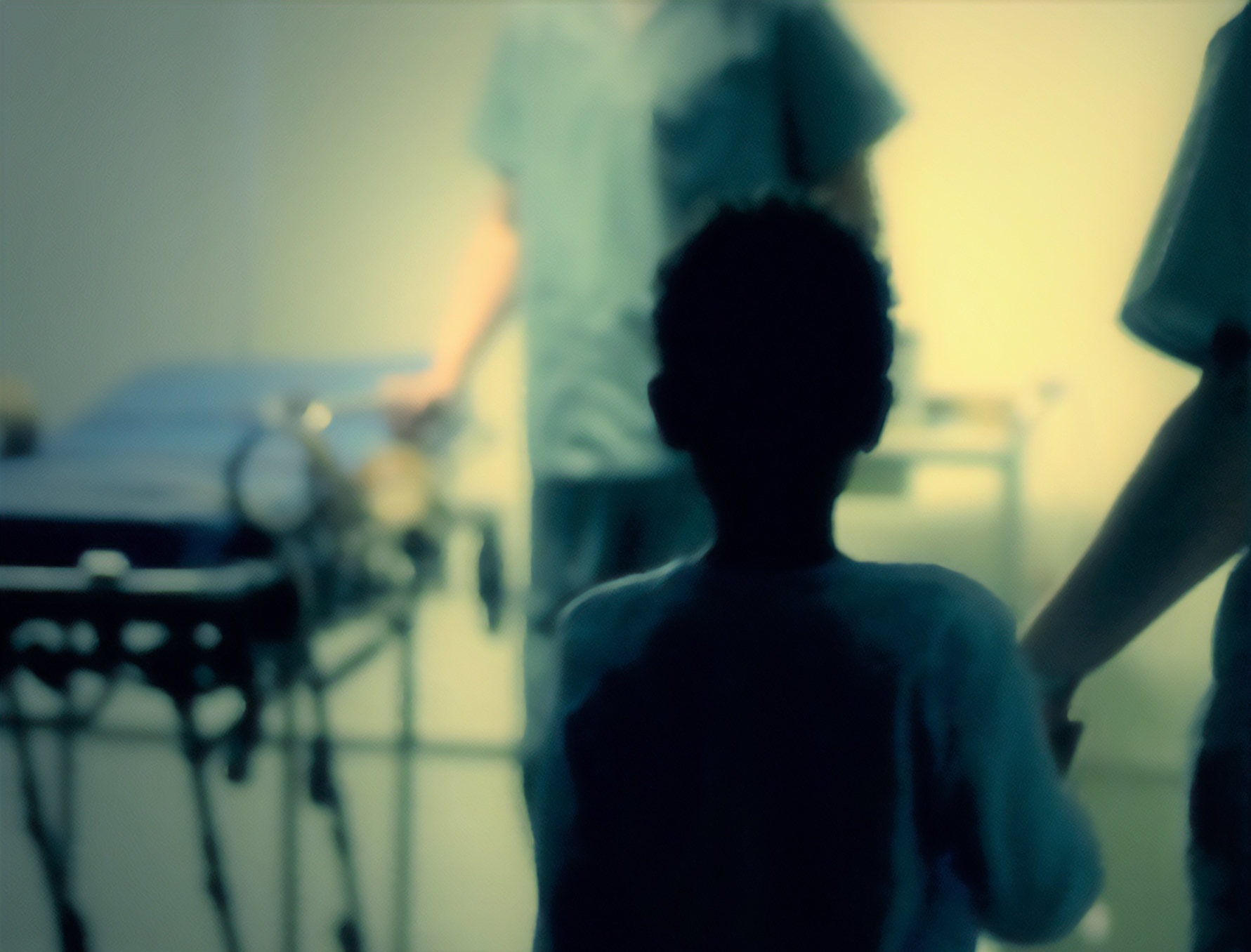
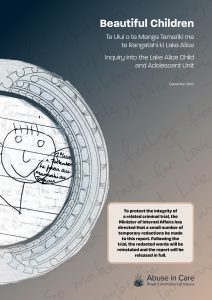
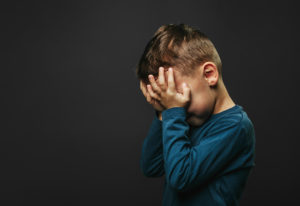
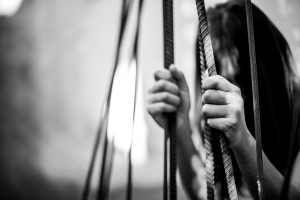
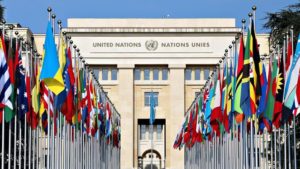
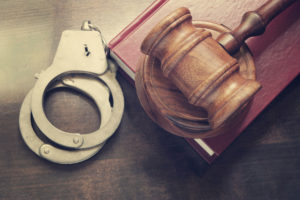
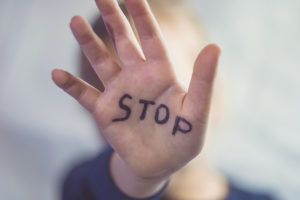
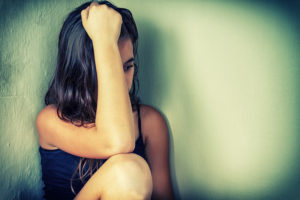
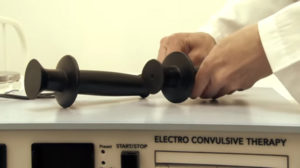
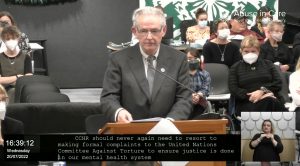
SHARE YOUR STORY/COMMENT